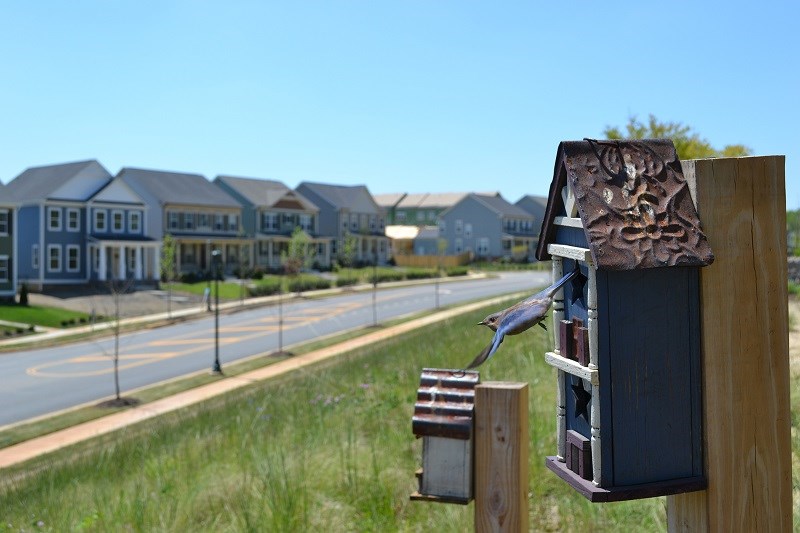
11 May . 2021
The Birds at Embrey Mill
Springtime is springing out all over.
Flowers push themselves up from their winter slumber.
Trees reach out to the sky hungry for their leaves to taste the sunlight.
And birds of all sorts fill our Embrey Mill community with song.
Here are a few birds of note (get it?) that you can listen and look for with your family:
-
Starlings
Starlings are not native to our area or even our country. These iridescent black birds were originally brought to the US by the American Acclimatization Society. In 1890, they attempted to populate the parks of New York with every bird mentioned by William Shakespeare. About 100 starlings were brought from Europe. And then a birdy boom happened, and now they’re found all over the country. For more info on this literary avian, check out this Scientific American article. -
Woodpeckers
It’s strange to be outside and hear a tap-tap-tapping you don’t expect. It could be your neighbor finishing another woodworking project, or it could be a woodpecker. Woodpeckers use their sharp beaks to poke a hole into a tree branch, but then they use their extra-long and sticky tongues to fish out bugs living inside the wood. They also use their drumming to communicate with other woodpeckers. Listen to some woodpecker drumming here. -
Mourning doves
With a call that sounds super sad, mourning doves are often found in pairs all throughout North America. Though they are one of the most hunted birds, they make up for it by raising up to 6 families a year. Their mournful song has inspired many, including Tomás Méndez who, in 1954, wrote Cucurrucucú paloma: a lovesick song echoing the call of the mourning dove. -
Canada goose You always know when Canada geese have returned by seeing them fly in V formation and hearing their distinctive honks. They often congregate near ponds, lakes, and other small bodies of water as this is where they like to sleep. But they don’t just sleep in the water: they can also sleep while flying in that V formation, taking turns being the leader so all of them can get a little rest. Learn more about this “half-brain” sleep, once again, at Scientific American.
A great place to begin your search for birds at Embrey Mill is our Blue Bird Hideaway park. Pack a lunch, sit at a picnic table, and enjoy a meal in the sun. Bring a notebook to jot down the birds you see and hear, including those living in all our blue birdhouses! The Blue Bird Hideaway is a wonderful place to relax, soak up nature, and observe our local feathered friends.
Because there are more birds in our backyards and parks than just the four mentioned above, here’s a great bird identification guide loaded with all sorts of other education and fun resources for families who have gone to the birds at Embrey Mill: Northern Virginia Backyard Bird Identification Guide and Checklist.
